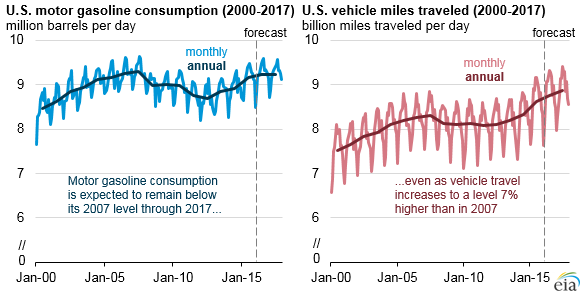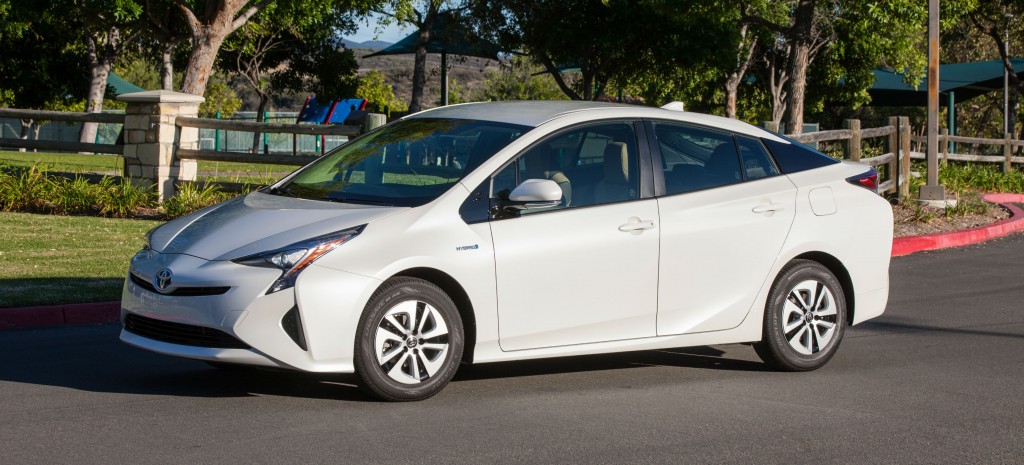Increased vehicle fuel efficiencies keeping gasoline consumption low despite increased U.S. mileage
Travel by vehicle is up almost 4% from its previous peak in 2007 in the U.S., but motor gasoline consumption remains below previous highs due to increased fuel efficiencies, reports the Energy Information Administration. Improvements in light-duty vehicle fuel economy have been the primary source for lower consumption despite the higher miles, the EIA said in its report.
The EIA’s Short-Term Energy Outlook predicts that motor gasoline consumption will average 9.23 MMBOPD in both 2016 and 2017, about 0.6% below its 2007 level. In contrast, vehicle travel is expected to grow to levels 5% and 7% above the 2007 level in 2016 and 2017, respectively.
Gasoline consumption accelerated at breakneck speed in 2015, with U.S. drivers using approximately 240 MBOPD more over the course of the year. That’s three times as large as the growth in 2014 (78 MBOPD0, and 50% larger than the growth in 2013, (161 MBOPD), reports Reuters Market Analyst John Kemp. This rapid growth lent itself to increasing demand for crude oil amid a global glut, but it appears that gasoline consumption may not be able to continue pushing demand higher at the same rate as fuel economy continues to improve.
“U.S.-India-China gasoline consumption is critical for the global oil supply-demand balance over the next 12 months,” said Kemp. “Comparatively low fuel prices should continue to support faster than average growth in fuel demand although it remains uncertain how much of the impact from the drop in prices has already filtered through.”




